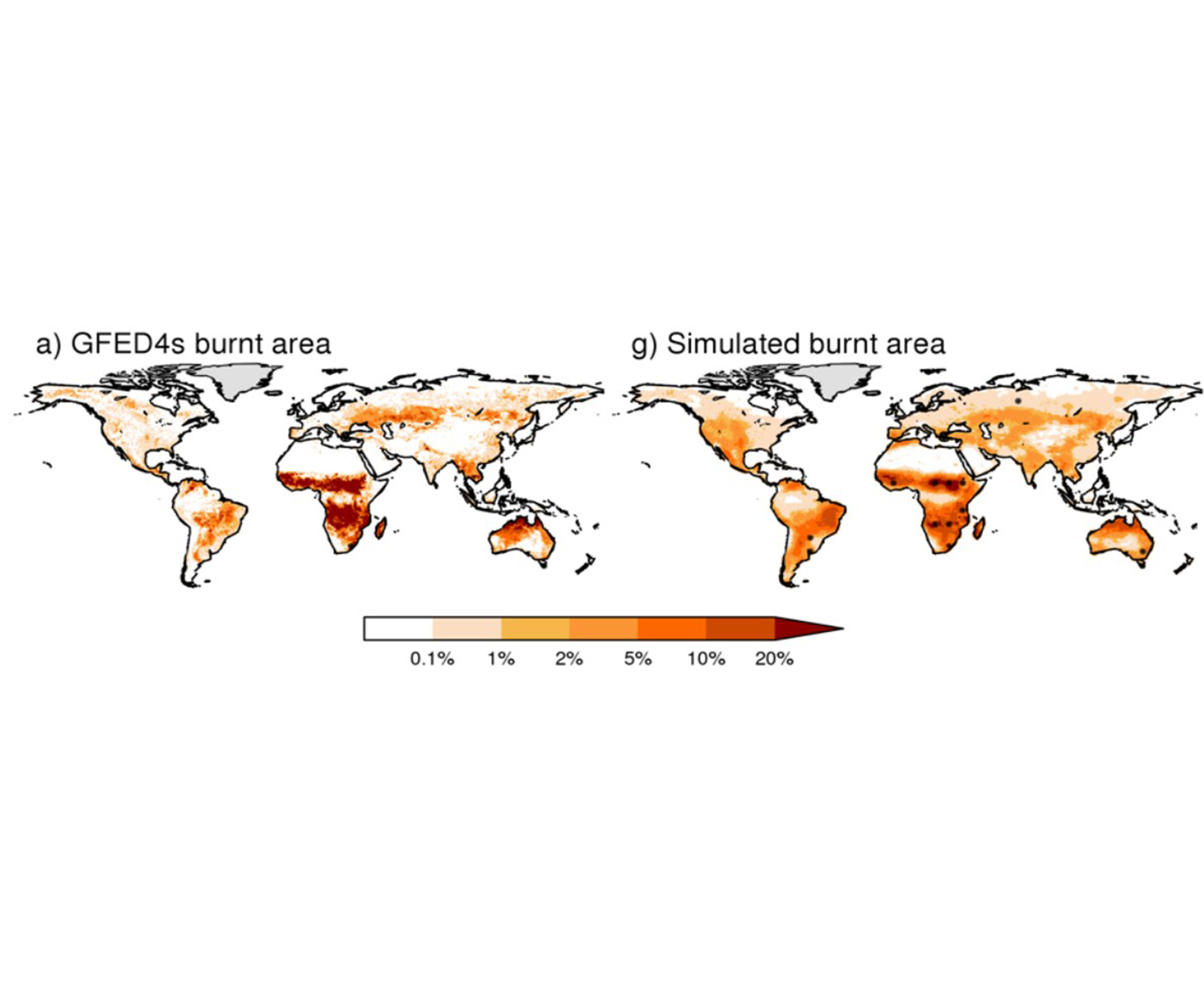FireMIP
Selected scientific project outcomes
The comparisons within the Fire Model Intercomparison Project (FireMIP) showed that the models reproduce the spatial patterns and global totals of burned area (Figure 1) and emissions (Forkel et al., 2019; Li et al., 2019; Teckentrup et al., 2019; Hantson et al., 2020).
The simulations over the historical period show a strong divergence in simulated burned area trends for the recent two decades (Andela et al., 2017) and the last century (Teckentrup et al., 2019). This divergence in trends between models was attributed to anthropogenic factors based on the sensitivity simulations (Teckentrup et al., 2019; Li et al., 2019, Figure 2).
Models did not show a strong trend due to changes in climate over the 20th century; however, a strong influence of climate on the interannual variability was identified (Teckentrup et al., 2019). Anthropogenic fires influence seasonality, and explicitly including cropland fires improves the seasonality of fire in the Northern Hemisphere (Hantson et al., 2020).
A multivariate analysis using random forest showed that the response of mean burned area to climatic variables was reasonable; however, models did not reproduce the relationship between vegetation productivity and burned area well (Forkel et al., 2019, Figure 3).




